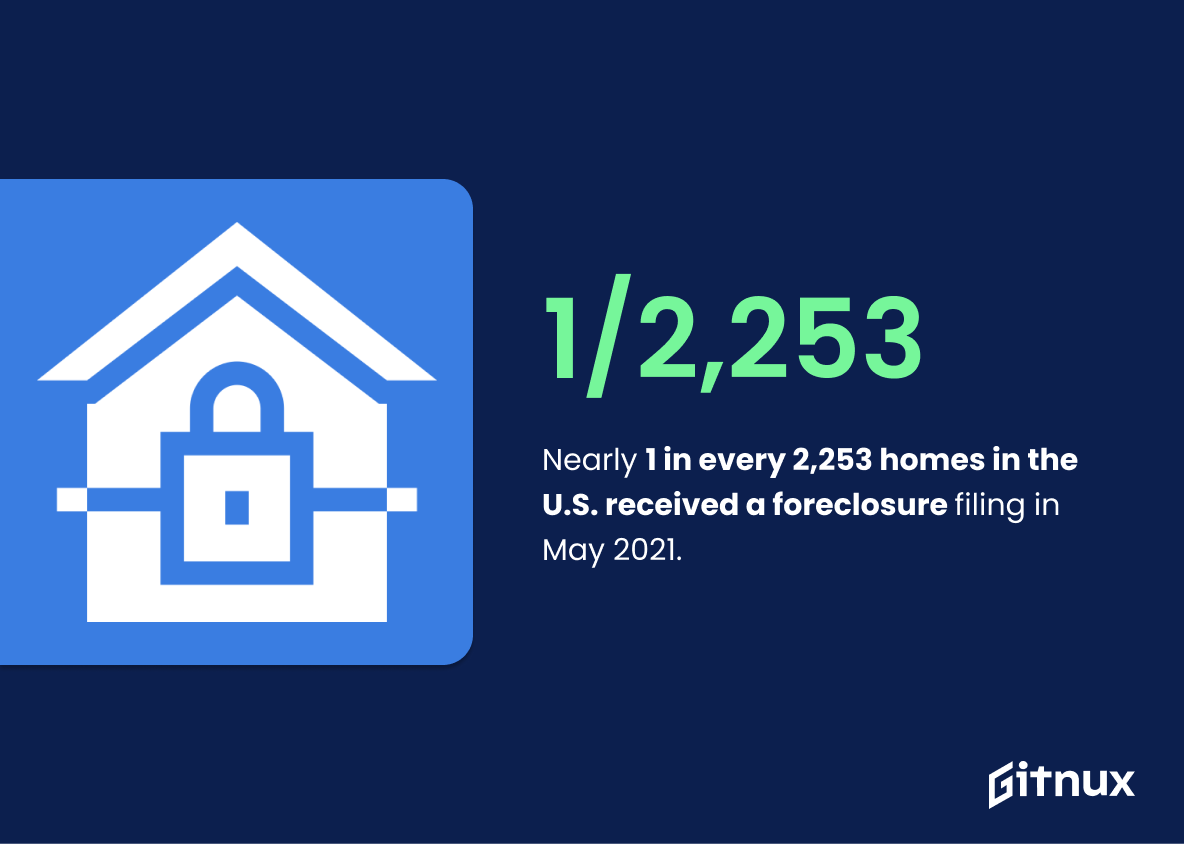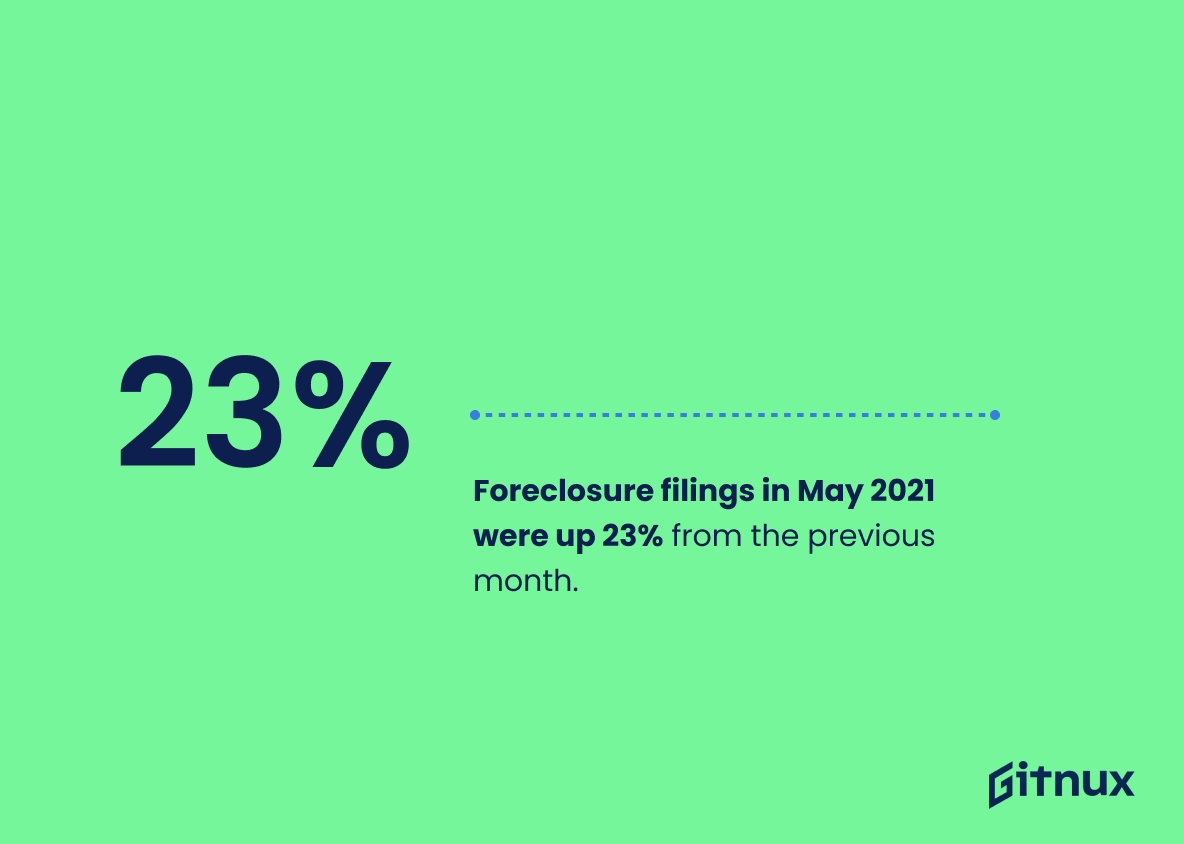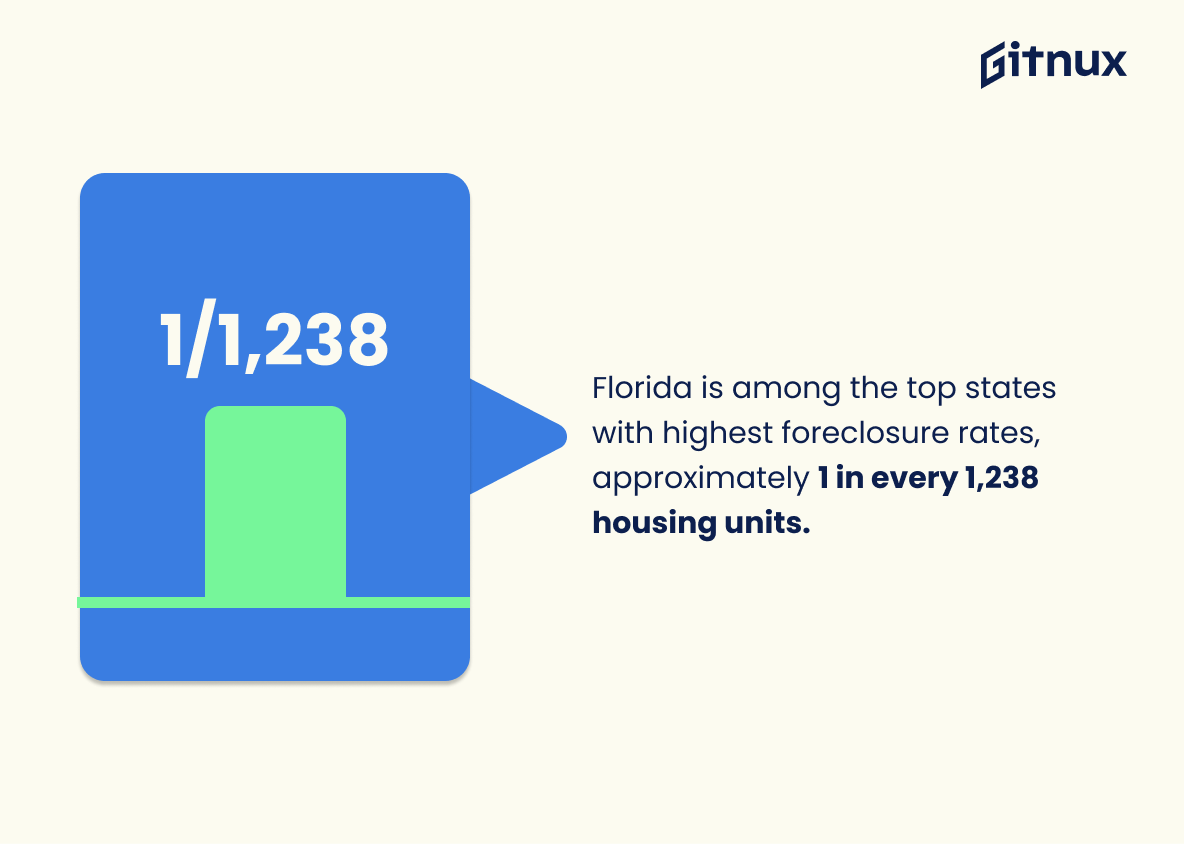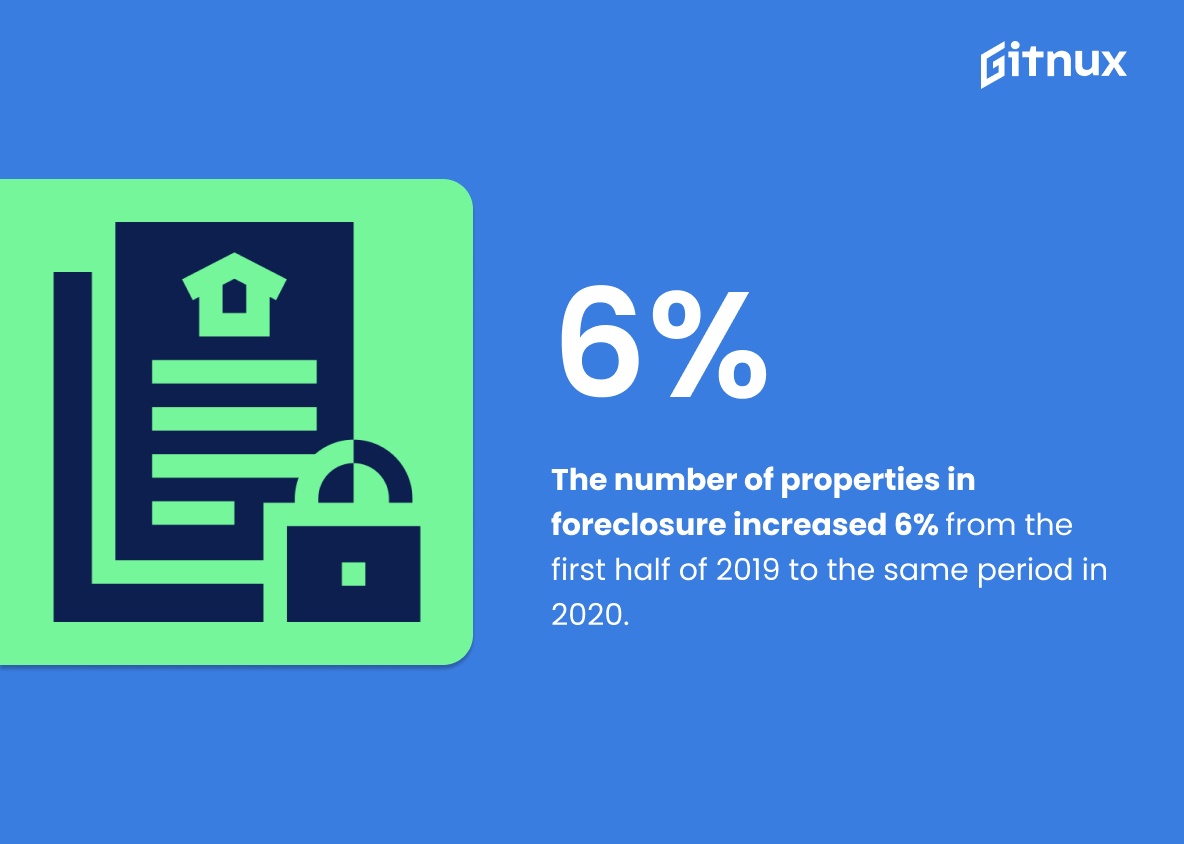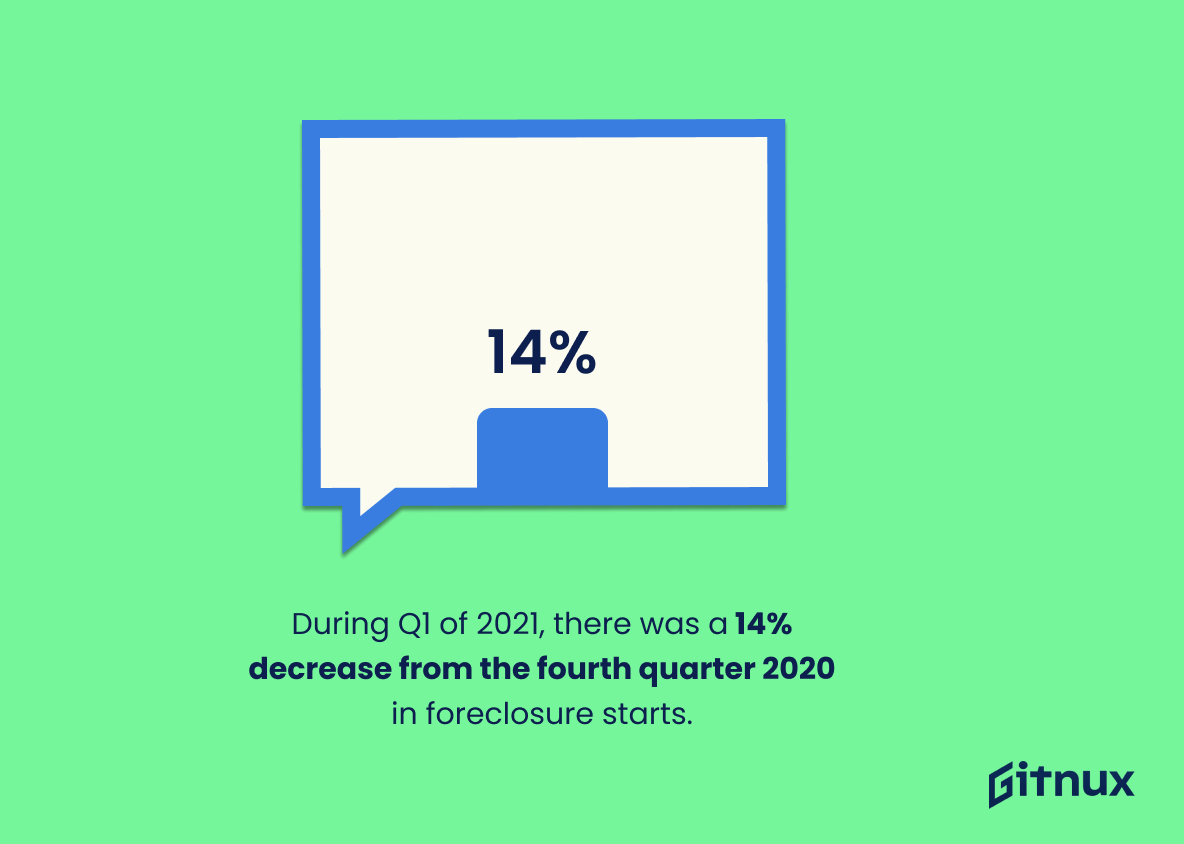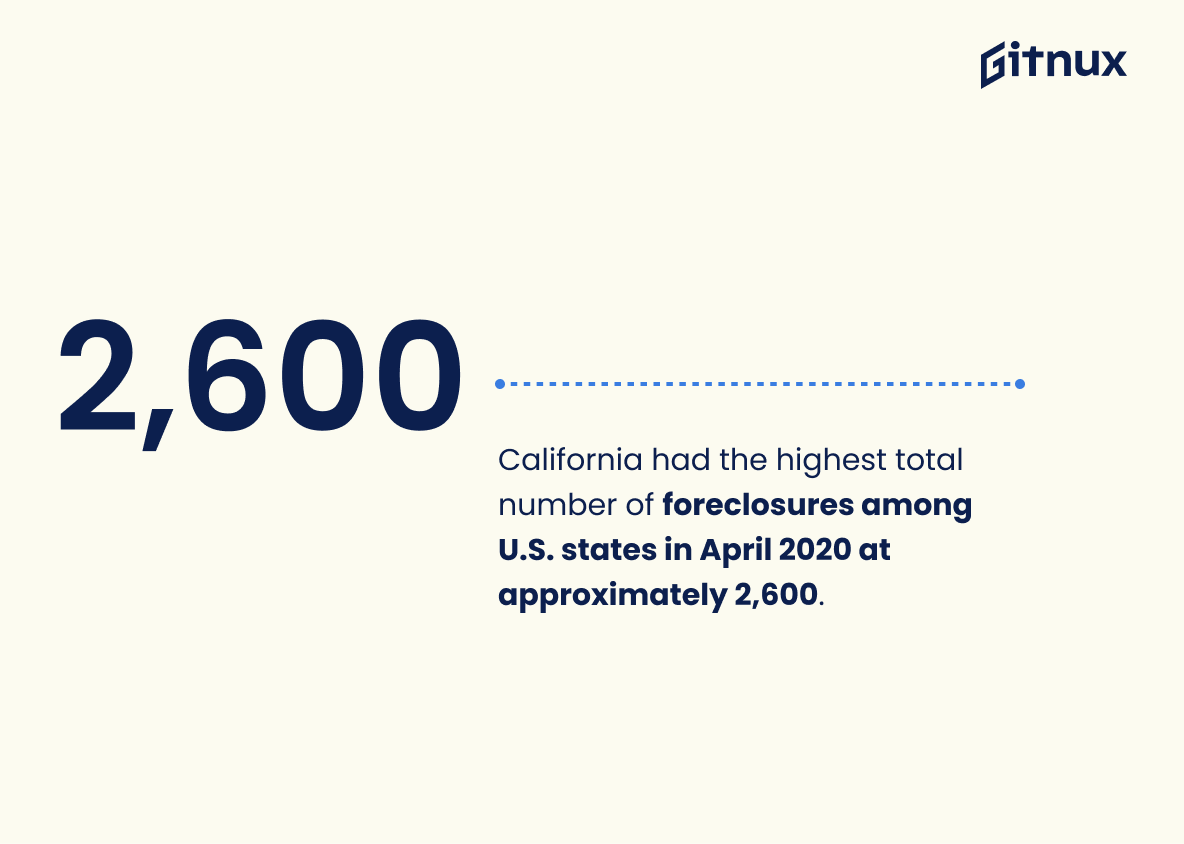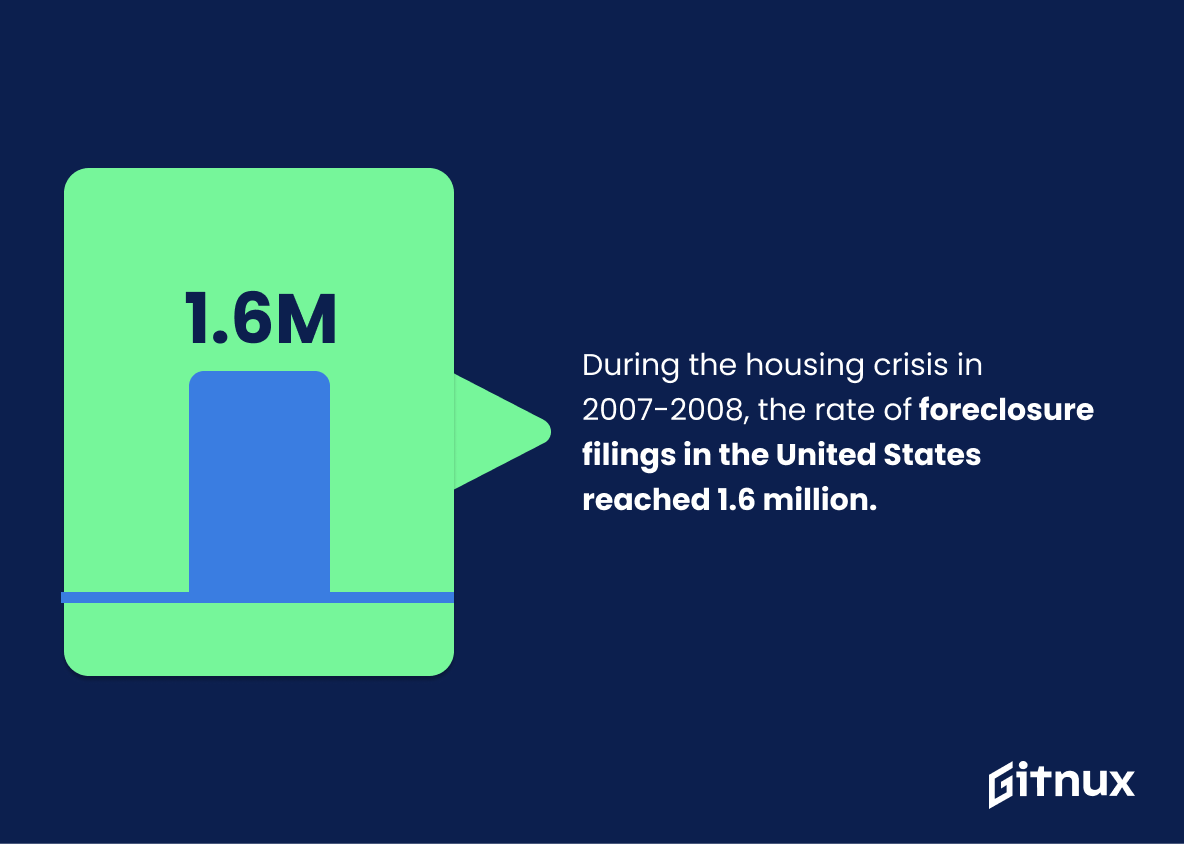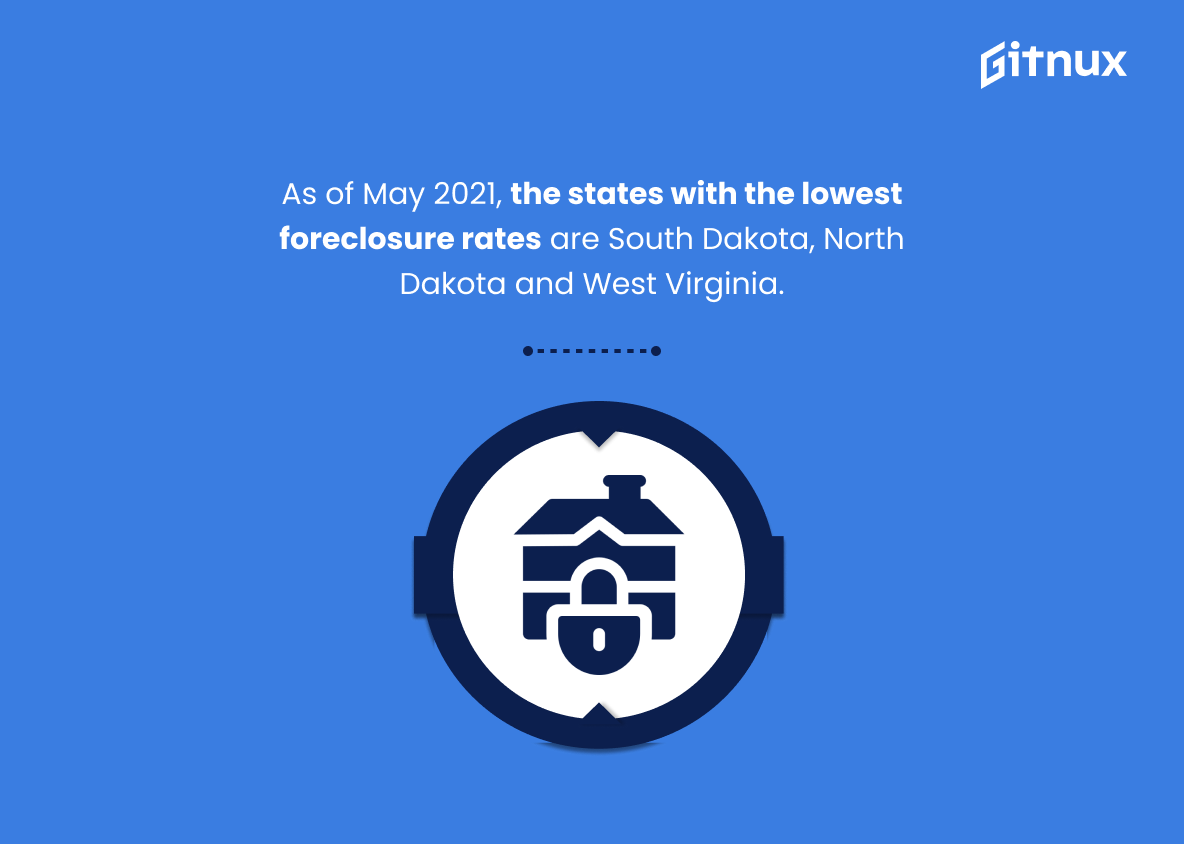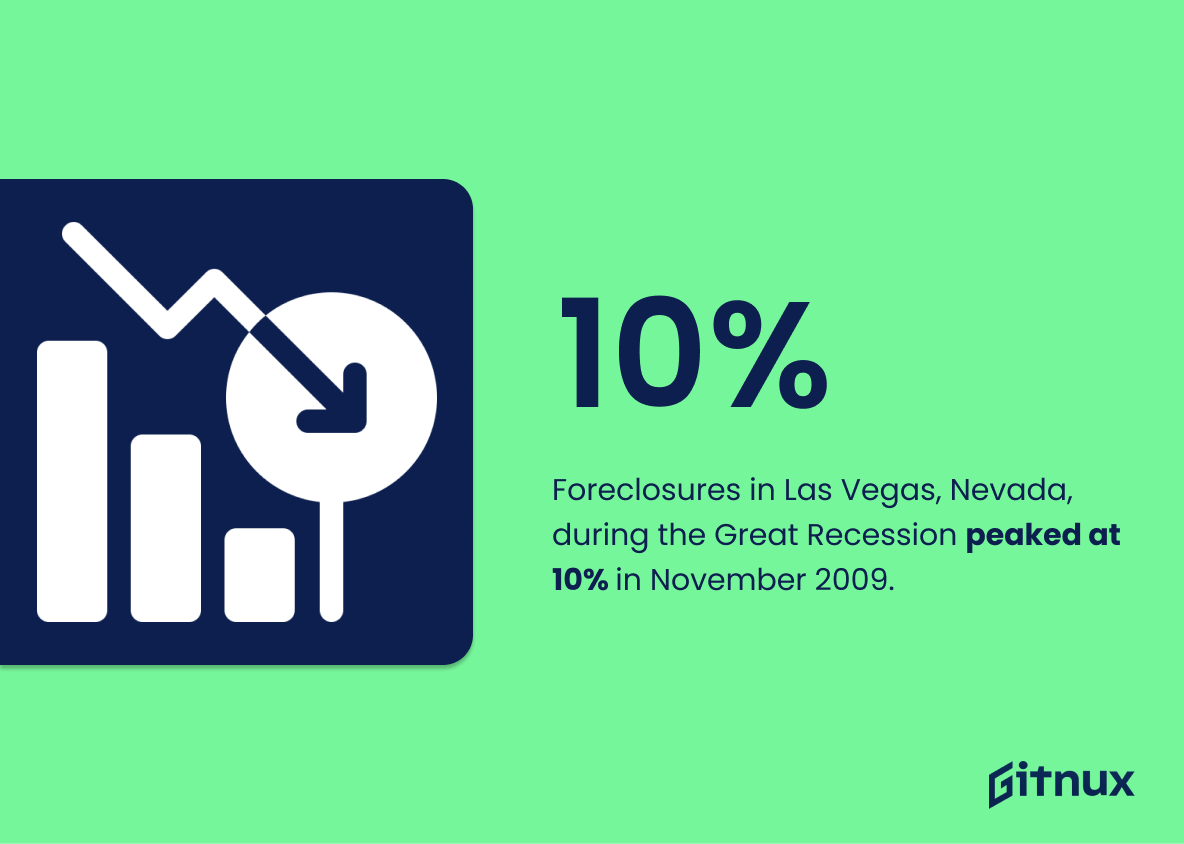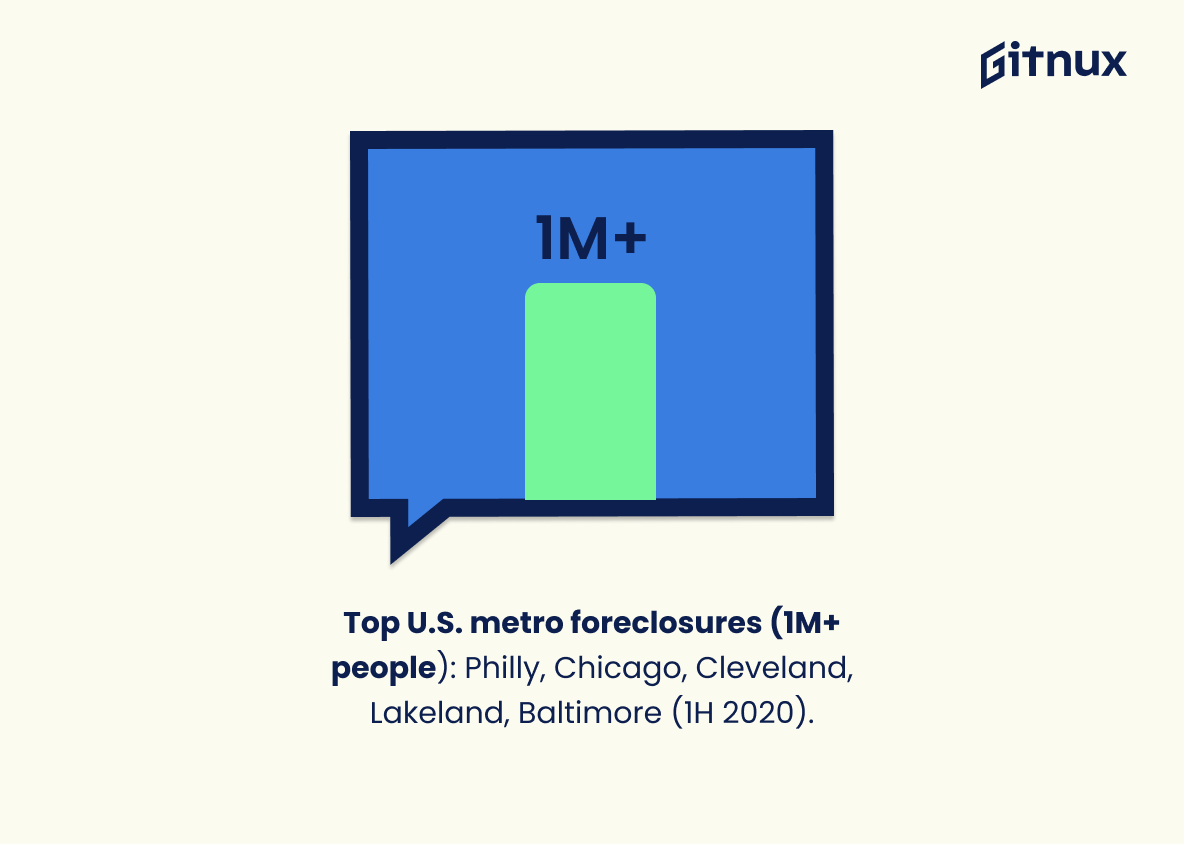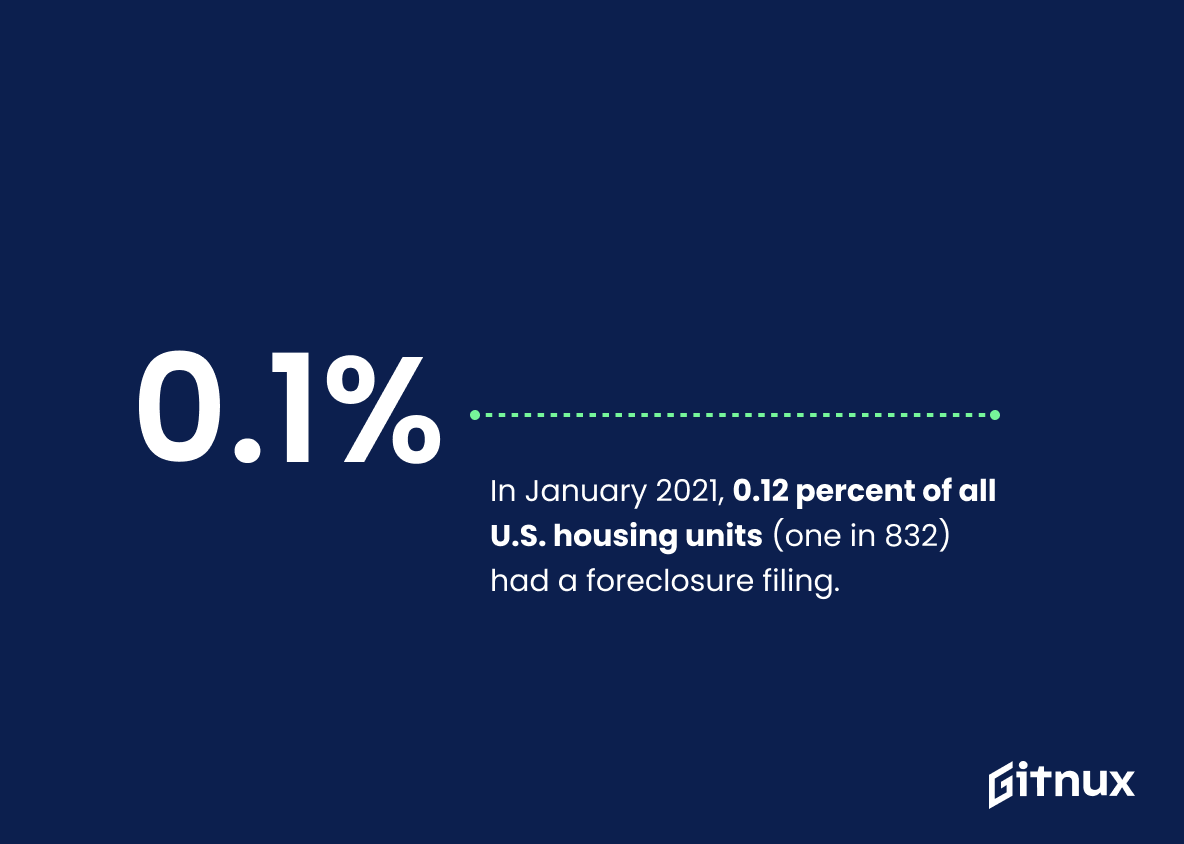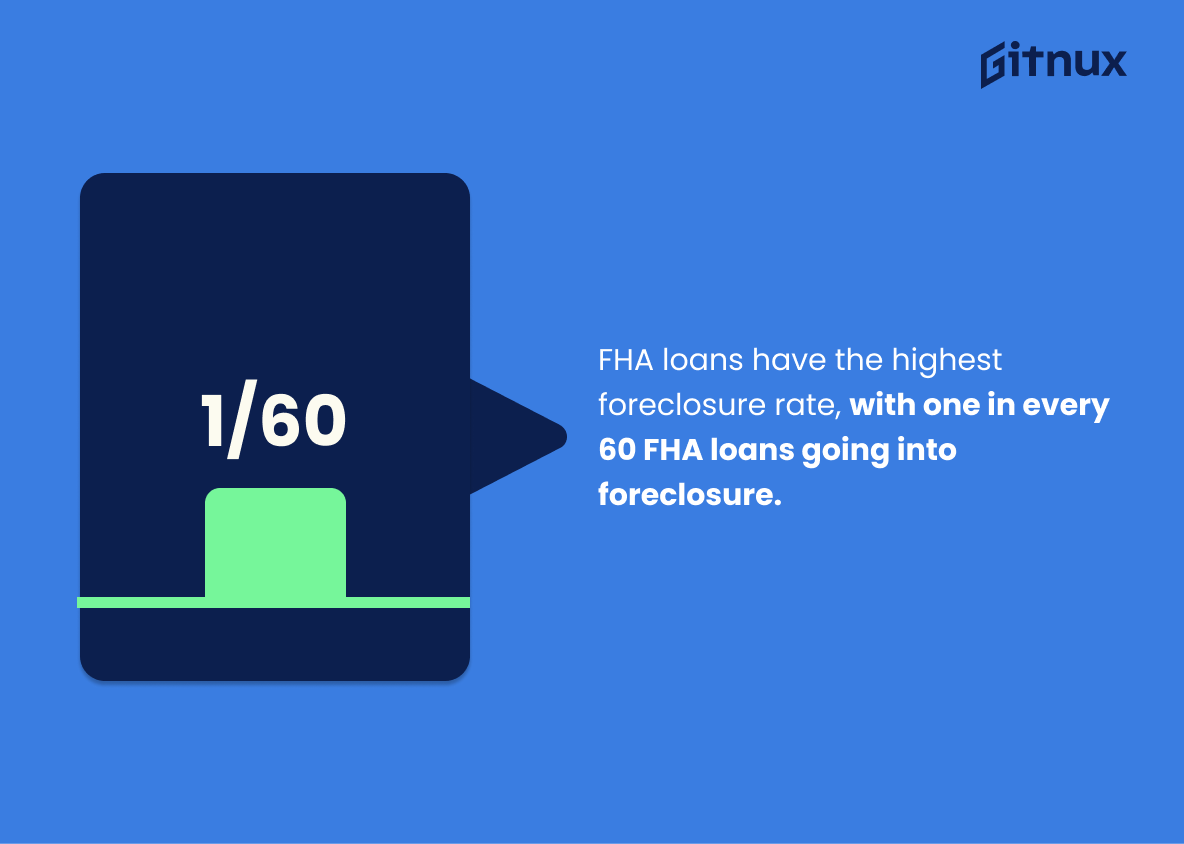As economies rise and fall and real estate markets fluctuate, one constant remains: foreclosures. These unfortunate situations occur when homeowners are unable to continue payments on their homes, leading to a legal process that ultimately terminates their property ownership rights.
Understanding the statistics and trends related to foreclosures can provide valuable insight, helping potential buyers, property investors, and homeowners make informed decisions and navigate the unpredictable housing market. In this blog post, we delve into the riveting world of foreclosure statistics, analyzing patterns and exploring the causes and effects of this integral facet of the real estate landscape.
The Latest Foreclosures Statistics Unveiled
Nearly 1 in every 2,253 homes in the U.S. received a foreclosure filing in May 2021.
Encapsulated within the figures stating that nearly 1 in every 2,253 homes in the U.S. received a foreclosure filing in May 2021, lies a significant narrative in the realm of foreclosure statistics. This value resonates with critical implications, unfolding the state of homeownership and financial stability within the country. Each foreclosure manifests a story, possibly of financial strain or economic turbulence, hence charting an empathetic map of fiscal realities.
Furthermore, these figures contribute to comprehensive trend analyses, facilitating a broader understanding of housing market conditions and economic health. At the same time, they provide essential fuel for shaping policies and strategies aimed at reducing foreclosure rates, triggering socioeconomic improvement. Altogether, these stats provide a barometer of societal economic well-being that is quintessential to our discourse.
During the 2008 financial crisis, 10 million Americans faced foreclosure on their homes.
The figure of 10 million Americans facing foreclosure during the 2008 financial crisis serves as a stark reminder of the profound devastation mortgage crises can wreak on a country. Embarking on a journey through foreclosure statistics, one cannot bypass this pivotal moment as it marked an era of immense hardship and turmoil for millions of homeowners.
An analysis of this period not only illuminates the severity of the issue, but it also unfolds narratives of resilience, adaptability, and the human endeavor to restore financial stability. Consequently, this statistic anchors our discourse, indelibly imprinting the heavy toll of economic crisis and the imperative to fortify safeguards against future calamity.
Foreclosure filings in May 2021 were up 23% from the previous month.
Notably from the given statistic, the picture of how the foreclosure environment oscillated in May 2021 becomes strikingly clear, portraying a significant 23% escalation compared to the previous month. Unveiling such a dramatic traverse, the statistic serves as a pulsating heartbeat, signaling not merely numbers, but the changing lives, opportunities, and challenges tied to each property.
In the realm of foreclosure statistics, numbers aren’t simple data points; they’re protagonists in an ongoing narrative, reflecting the stability of the housing market, financial health and distress signals of homeowners, and the influence of economic forces. Hence, this uptick places a lens on foreclosure trends, influences, and consequences, making it a crucial talking point in our engaging exchange on foreclosure statistics.
Florida is among the top states with highest foreclosure rates, approximately 1 in every 1,238 housing units.
Shining a spotlight on the real estate landscape, it’s noteworthy to unravel the striking rate of foreclosures threading through Florida’s tapestry. The state, marked by the fact that around one in every 1,238 housing units faces foreclosure, stands as an eminent example of the foreclosure epidemic hitting various regions of the US.
This raw data holds particular relevance for our discourse on Foreclosures Statistics, illustrating the gravity, scale and impact of the situation. Understanding these figures not only paints an accurate portrait of the real estate climate, but provides necessary context to navigate inevitable questions about housing market health, economic factors and policies needed to mitigate such issues.
In 2020, there were approximately 214,323 properties in the US in stages of foreclosure or bank-owned.
Examining the aforementioned statistic in our discussion of foreclosure statistics, we uncover a key narrative sketching the unique contours of the housing situation in the US in 2020. The number, 214,323 properties, stencils a sobering picture of the foreclosure landscape that year, adeptly reflecting the tangible impact of economic adversities on homeowners nationwide.
These figures don’t merely quantify foreclosures, but rather trail the ripple effects of aspects like unemployment, income, real estate dynamics, and even policy decisions. It’s not just a number, but a mirror glimpsing at the real-world scenario. Whenever we skim these digits, we are essentially leafing through pivotal chapters of America’s economic narrative for that year.
The number of properties in foreclosure increased 6% from the first half of 2019 to the same period in 2020.
Delving into foreclosure statistics presents an insightful panorama of the real estate market’s health, and our specific trend – the 6% surge in foreclosure properties from the first half of 2019 to 2020 – is no exception. Through this lens, one may perceive the transition from stability to turbulence within the housing sector. This uptick amplifies economic anxiety as it signifies not only an increase in homeowners unable to meet mortgage obligations but also suggests potential depletion of housing assets for lenders. Indeed, such a statistic can trigger ripple effects, leading to increased caution in lending and the propensity for stricter mortgage approval processes.
Furthermore, from the vantage point of investors, it presents an emerging landscape that may indicate more risk—or in some situations—greater opportunity for property procurement at lower costs, ignited by the surge in foreclosures. Hence, within the complex tapestry of foreclosure statistics, this escalating trend of property foreclosures possesses the power to reshape narratives and recalibrate strategies across the spectrum of homeowners, lenders, and investors.
During Q1 of 2021, there was a 14% decrease from the fourth quarter 2020 in foreclosure starts.
The undulating drama of foreclosure starts provides the pulse of economic vitality, offering a glimpse into the financial health of property holders. Reflecting on the Q1 2021 data, it’s akin to stumbling upon a silver lining amidst the clouds as we witnessed a significant 14% decrease from the fourth quarter of 2020. This decline underscores an era of resilience despite economic headwinds, prompting us to delve deeper into foreclosure trends to understand the holistic influence on the real estate market.
It’s not merely a number; it is a reflection of stability returning to housing markets grappling with the pandemic’s economic shockwaves. And it may also signal nurturing opportunities for potential real estate investors and policymakers alike to enhance their strategies with an eye on current trends and emerging patterns in foreclosure starts.
California had the highest total number of foreclosures among U.S. states in April 2020 at approximately 2,600.
Analyzing the foreclosure data, we find an undeniable emphasis on the unique circumstance faced by California. In April 2020 alone, it surpassed all other U.S. states with a staggering number of 2,600 foreclosures. The sheer volume paints a highly informative picture of the real estate landscape in this state, acting as a springboard for in-depth discussions and probing analysis about the predicament homeowners found themselves in, as well as the conditions that led to such a phenomenon in the state known for its opulence.
The strategic insights gleaned from such data, therefore, hold immense value for our blog post on Foreclosures Statistics, offering an alarming glimpse into the state of housing distress while prompting us to raise pertinent questions and search for robust solutions.
During the housing crisis in 2007-2008, the rate of foreclosure filings in the United States reached 1.6 million.
The foreclosure filings rate reaching 1.6 million during the 2007-2008 housing crisis serves as an alarming benchmark in our history, highlighting the vulnerability of the housing market and its potential impact on homeowners. This stark figure paints a vivid picture of the ordeal many Americans had to endure, shedding light on the gravity of foreclosure statistics.
Moreover, it prompts an in-depth analysis, urging us to understand what led to such catastrophic figures, the measures taken to mitigate this crisis, the subsequent recovery, and the lessons learned to prevent a similar occurrence in the future. In essence, this figure sets the stage for a thoughtful exploration of foreclosures, ensuring a comprehensive grasp of their implications on individuals, families, communities, and the economy overall.
As of May 2021, the states with the lowest foreclosure rates are South Dakota, North Dakota and West Virginia.
Dipping into the vibrant panorama of foreclosure statistics can help to paint a clearer picture of regional economic health and housing stability. Probing into the data as of May 2021, one can discern a significant truth about the states of South Dakota, North Dakota, and West Virginia. These regions proudly post the lowest foreclosure rates, suggesting a level of economic strength and housing stability that outshines other areas.
This intriguing revelation is more than just a fun fact, it is a powerful testament to the resilience of these states that provides valuable insights for homeowners, investors, and policy-makers, all the while enriching our comprehensive understanding of nation-wide foreclosure rate disparities.
Foreclosures in Las Vegas, Nevada, during the Great Recession peaked at 10% in November 2009.
Peeling back the layers of this compelling statistic reveals its raw significance for the context of Foreclosure Statistics. “Foreclosures in Las Vegas, Nevada, during the Great Recession peaked at 10% in November 2009” – an echo from the past that resounds as a vivid testimony to the depths of housing market crises.
This data point serves as a stark reminder, illustrating the severe impact of economic downturns on homeowners. It brings into focus the magnitude of the Great Recession, particularly in Las Vegas, a city which battled an especially fierce storm of foreclosures. In the timeline of foreclosure numbers, November 2009 stands out as a grim milestone.
Moreover, spotlighting this peak exposes the ripple effect in housing market trends, neighbourhood stability, and community vitality. Thus, it’s the center stage of our blog post, offering perspectives crucial to understanding past foreclosure fluctuations, gauging the resilience of the housing market, and predicting potential future patterns. A riveting reference point, it provides context that frames the complex narrative of foreclosure statistics.
Among U.S. metropolitan areas with at least 1 million people, those with the highest foreclosure rates in the first half of 2020 were Philadelphia PA; Chicago, IL; Cleveland, OH; Lakeland, FL; and Baltimore, MD.
Highlighting the foreclosures rates in the most populated U.S. metropolitan areas like Philadelphia, Chicago, Cleveland, Lakeland, and Baltimore enriches the readers’ understanding of the economic challenges faced by these regions in the first half of 2020. Not only does this quantifiable data provide a spatial perspective to the narrative, it also pulls back layers revealing outcomes of possible mortgage crisis and overall health of the housing market in their respective locales.
Painted in the broad strokes of an economic downturn, or perhaps the impact of COVID-19 financial constraints, this revelation of foreclosure rates in these cities seems a crucial cog in the mechanism of understanding nationwide foreclosures trends within the blog post.
In January 2021, 0.12 percent of all U.S. housing units (one in 832) had a foreclosure filing.
When painting a picture of the United States’ foreclosure landscape in a blog post about Foreclosure Statistics, the seemingly discreet digit of 0.12 percent that represented all U.S. housing units receiving foreclosure filings in January 2021 plays a pivotal role. It acts as a marker, a testament to one sad reality in 832 American homes. Unwrapping this figure intricately intertwines the threads of economic health, housing market patterns, and personal financial management, thus highlighting the fragility and turn of events in the lives of a not-insignificant number of U.S. homeowners.
Moreover, this statistic also works as a narrative torch, illuminating past trends, current statuses, and potential future trajectories for foreclosure occurrences. An understanding of this can aid in formulating potential solutions, strategies, and regulations to better assist those facing the threat of foreclosure.
FHA loans have the highest foreclosure rate, with one in every 60 FHA loans going into foreclosure.
This particular piece of data serves as an eye-opener, shedding light on the darker side of FHA loans, noted for their accessibility. The high foreclosure rate among this lending option, with a ratio of one in every 60 heading towards foreclosure, underscores the existence of an inherent risk in these widely popular loans. Thus, for readers of this blog post navigating through the intricate web of Foreclosures Statistics, this snapshot acts as a valuable caution sign, alerting them towards the need for thorough financial planning, mitigating risks and exploring alternative options.
Conclusion
In the fluctuating realm of real estate, foreclosures statistics have been a significant barometer of both personal and national economic health. These numbers have illuminated the challenges faced by homeowners across the country and highlighted the areas where financial distress is perhaps highest. They also underscore the need for sound financial planning and the value of understanding mortgage terms and conditions.
The decreasing trend in foreclosure numbers can instill a sense of optimism, but it also reminds us of the ongoing need for vigilance and proactive measures to avoid the risk of foreclosure. After all, every effort made today towards greater financial security will pave the way to a more stable and prosperous tomorrow in the real estate market.
References
0. – https://www.www.mba.org
1. – https://www.www.realtytrac.com
2. – https://www.www.attomdata.com
3. – https://www.www.housingwire.com
4. – https://www.www.cbsnews.com
5. – https://www.www.pbs.org
6. – https://www.www.statista.com
7. – https://www.www.pewtrusts.org
